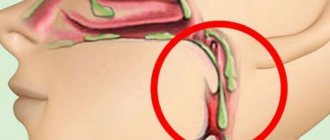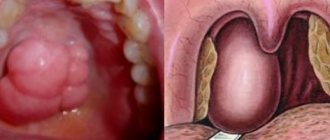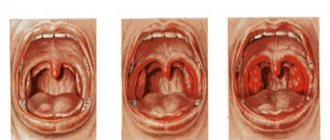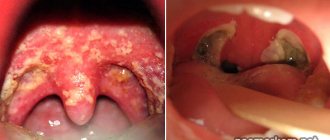A feeling of a lump in the trachea is one of the most common symptoms of a throat disease. Along with the lump, you may also feel itching and difficulty breathing. Such symptoms have several degrees of severity: from mild - a person feels only slight discomfort, to severe - swallowing becomes difficult. The feeling when something is bothering your throat is associated not only with ENT diseases. Sometimes this is a sign of a disease of the thyroid gland, spine or digestive system. If these sensations do not go away for a long time, you should consult a specialist for an accurate diagnosis.
Causes of throat discomfort
There are a lot of factors that cause discomfort in the throat. They can be either of internal origin or a consequence of external influences. Most often, discomfort in the tracheal area is observed in women.
Stress
Frequent stressful situations do not have the best effect on the body. One of the manifestations of disorders against the background of a nervous disorder may be a lump in the throat. The pattern of formation of this symptom is simple:
- with a nervous disorder, a person needs more air, so the vocal cords move to the edge of the larynx;
- if a stressful situation is accompanied by crying and screaming, additional stress is placed on the ligaments;
- due to excessive pressure on the larynx, the epiglottis rises slightly above the glottis and puts pressure on the surrounding tissues.
When a person calms down, all unpleasant sensations disappear. In this case, there is no need to take any medications - this is the body’s natural reaction to a stress factor. If the discomfort does not go away, this is a clear sign of a nervous spasm of the pharynx. Then you will need to seek help from a psychotherapist who will relieve the spasm and recommend treatment.
Digestive system disorders
If discomfort in the tracheal area appears even in moments of calm and rest, the reason for this may be a disorder of the digestive system. With heartburn and increased acid content in the stomach, part of its contents is thrown into the esophagus. This leads to burns of the mucous membrane and inflammation, which causes discomfort in the throat.
In this case, there is no need to take independent measures and self-medicate. It is recommended to contact a gastroenterologist for examination. He will assess the patient's condition and prescribe adequate treatment.
Thyroid enlargement
This is one of the most common causes of difficulty swallowing and discomfort in the Adam's apple area. This organ covers the trachea on both the right and left sides. The growth can also be localized on one side, or on the right or left. And if the thyroid gland enlarges, it begins to compress all the organs that are in the throat. Symptoms such as lump, soreness and cough appear. If you suspect that a lump in your throat is a consequence of thyroid disease, you should immediately contact an endocrinologist.
An enlarged thyroid gland affects all organs in the throat.
Inflammatory throat diseases
A feeling of a lump in the throat, accompanied by pain and soreness, is most often associated with a viral or bacterial infection. Discomfort in the tracheal area can be caused by two main factors:
- damage to the epithelial villi during acute pharyngitis (they are destroyed during severe infection and the throat becomes unprotected);
- outflow of mucus from the nose into the throat (this creates a feeling of a lump, you constantly want to cough up).
To get rid of unpleasant sensations, it is worth undergoing drug therapy aimed at treating a viral or bacterial infection.
Osteochondrosis
Difficulty breathing and discomfort in the Adam's apple area are often felt with problems in the cervical spine. Pinching of the nerve responsible for the functioning of the pharynx, esophagus and respiratory muscles leads to a feeling of constriction, creates breathing difficulties, and an imaginary sensation of a foreign object when swallowing. Dry mouth occurs, which is not helped by drinking plenty of fluids.
If treatment is not started promptly, the consequences can be negative for health. Shortness of breath will develop, turning into suffocation. Therapeutic measures usually prescribed for osteochondrosis are massage, recreational exercise and taking certain medications.
Foreign objects
Sometimes the feeling of a lump in the throat is caused by the presence of an object or piece of food there. A small tablet may get stuck in the esophagus or a small fruit seed may stick. The symptoms are as follows:
- painful sensations in the nasopharynx;
- constant desire to cough;
- nausea leading to vomiting.
If a small and non-hazardous object is stuck, you can try to push it through with plenty of drink or rough food. If dangerous or toxic objects (pills, needles, watch batteries) get into your throat, you should immediately seek help from a doctor.
During pregnancy, the sensation of a lump in the throat often causes toxicosis.
Causes
Factors that can cause a lump in the throat after eating are divided into several groups. The main ones include pathologies localized in the digestive tract.
Feeling a lump in the throat after eating is a sign of the following pathological conditions:
- A hernia formed in the area of the esophageal opening of the diaphragm.
- Diverticula in the esophagus. In this case, a protrusion forms in the wall of the esophagus, which narrows the lumen of the esophagus.
- Gastroesophageal reflux disease, or GERD. This pathology is characterized by disruption of the sphincter, as a result of which food entering the stomach is thrown back into the esophagus. At the same time, there is a feeling that food is standing in the throat.
Food plugs are accumulations of small food particles in the recesses of the tonsils. In this case, there will not only be a feeling of a lump in the throat, but also an unpleasant odor from the mouth.
In addition to these pathologies, discomfort after eating can be caused by pathologies of other origins. Disturbances in the functioning of the thyroid gland are one of them.
The causes may be an inflammatory process in the gland, and a lack of iodine or hormone production.
Note! Inflammation in the pharynx of a viral or infectious nature is also a causative factor in the manifestation of a lump. Most often, this symptom is caused by streptococcus.
Other causes of throat discomfort:
- Neoplasms of a benign or malignant nature, which are localized in the trachea or larynx.
- Pathologies of the heart and blood vessels - enlargement of the heart muscle and aortic aneurysm.
- Myasthenia gravis, muscular dystrophy.
In addition to diseases, the formation of a lump can be caused by other factors. For example, ingestion of foreign objects while eating, as well as improper use of medications, pregnancy and obesity.
Interesting! Warshavskaya gymnastics for GERD: rules of execution and contraindications
A lump in the throat after eating is often caused by disorders of the nervous system. A person may experience discomfort after eating due to nervous overstrain. In addition, this may provoke further fear of eating food.
This fear and fixation of a person on the state of his throat causes a special reaction of the body, and this symptom will appear regularly. This kind of problem can only be solved with the help of a neuropsychiatrist.
Lump in throat in children
In childhood, the feeling of a lump in the nasopharynx occurs very rarely. However, there are still several reasons why this feeling appears:
- Infectious diseases. When inflamed, the mucous membrane increases in size. Since the clearance of a child's throat is small, there is a feeling of a lump or a foreign object. The child also often complains that it is difficult for him to breathe and his throat hurts. Treatment of an infectious disease must necessarily include antibiotics.
- Damage to the esophagus. Children, especially those aged 1-2 years, tend to put everything they see into their mouths. This may not always be safe for the body. Ingestion of a sharp object or chemical substance causes swelling of the mucous membrane. In this case, it is necessary to immediately remove the object (either on your own or with medical assistance) or rinse it. Then the swelling will subside on its own.
- Enlarged thyroid gland. Just like adults, children can suffer from an overgrowth of the thyroid gland. This happens most often due to a lack of iodine in the body. The symptoms of the disease are similar to goiter observed in adults.
- Psychosomatic syndrome. Children who have suffered severe mental trauma often experience symptoms of a lump in the throat. The child constantly wants to cough, although there are no signs of a throat disease. In such cases, you should seek help from a psychotherapist.
Parents need to remember: a child (especially of younger preschool age) is often unable to accurately describe his feelings. Therefore, any suspicion of illness requires consultation with a pediatrician.
What to do if something bothers you in your throat
Actions that I recommend to people who have experienced sensations: a coma in the throat, tightness in the throat, difficulty breathing or swallowing, and the like, which I gave as an example above.
- It is necessary to exclude colds and infectious causes by contacting a physician.
- To do an ultrasound of the thyroid gland or take blood tests for thyroid hormones, you can go to an endocrinologist (these doctors are usually very specific, they have “yes” or “no”, no fantasies).
- If the therapist and endocrinologist find nothing, go to see a psychotherapist. Find a competent doctor, he will advise you on further actions based on the results of the examination. In any case, if you get to a competent specialist, it will be much cheaper than going to all the doctors first.
- Take your time to visit a gastroenterologist, ENT specialist or other doctors. You will definitely be stuck there for a long time, which will give the underlying disease the opportunity to develop, strengthen and become a chronic disease. This treatment is much more difficult, longer and, naturally, more expensive. Save on treatment correctly, without the risk of complications and additional problems. In order to exclude the most dangerous conditions, a therapist and an endocrinologist are enough, everything else is tolerated. True, if there is an obvious injury, then urgent help is needed, but you will either feel it yourself, and the therapist and the endocrinologist will see it or an ultrasound will show it.
Read more about the sensation of a lump in the throat
Treatment of discomfort in the throat
A lump in the throat is not a disease, but only its consequence. Therefore, in order for the discomfort to go away, it is important to eliminate its cause. For this purpose, both drug treatment and traditional methods are used. Treatment with medications is divided into several categories:
- Antibiotics – used to treat viral and infectious diseases.
- Antidepressants - help relieve stress.
- Antihistamines – relieve swelling of the mucous membrane.
- Throat soothing products are used to relieve soreness and soreness.
Folk remedies are used as an addition to the main therapy. Their goal is to soften the mucous membrane. The simplest and most accessible of them are:
- milk with butter;
- tea with honey (with a bite);
- rinses (usually chamomile or other herbal infusions are used);
- badger fat.
It is also necessary to take preventive measures against the development of such symptoms: strengthen the immune system, adhere to a healthy diet, humidify the air in the room and try to avoid stressful situations.
How to get rid of a lump in the throat with reflux
This article explains why you experience a lump in your throat with reflux, what causes it, what other symptoms are, and how you can manage it.
Lump in throat due to reflux
What is reflux?
Everyone has an acid in their stomach that digests and breaks down food. At the top of the stomach is a muscle valve that closes to prevent food and stomach acids from escaping up into the esophagus. If this muscle valve (esophageal sphincter) does not work well, stomach acids can back up into the esophagus, causing reflux or symptoms of indigestion (heartburn).
However, in some people, small amounts of stomach acid can travel further into the back of the throat, affecting the lining of the throat and voice box (larynx) and causing irritation, hoarseness, and a lump in the throat. This is called laryngopharyngeal reflux (LPR) or extra-esophageal reflux (EOR). Its common name is “silent reflux” because many people do not experience any of the classic symptoms of heartburn or indigestion. Silent reflux can occur throughout the day or night, even if a person has not eaten anything. Usually, however, silent reflux occurs at night.
What are the symptoms of silent reflux?
The most common symptoms are:
- Feeling of a lump in the throat.
- Hoarse, choked or hoarse voice.
- The desire to clear your throat.
- Difficulty swallowing (especially tablets or solid foods).
- Sore, dry and sensitive throat.
- Sometimes an unpleasant “sour” or “bilious” taste in the back of the mouth.
- Feeling like too much mucus/phlegm is collecting in the throat.
- Sudden attacks of coughing or choking at night.
- Chronic cough.
- Excessive belching, especially during the daytime.
Some people with silent reflux also experience heartburn. Others rarely notice heartburn or never experience it at all (hence the term “silent reflux”). This occurs because the material (known as “refluxate”) does not stay in the esophagus for long. As a result, the contents do not have time to irritate the esophagus and cause heartburn. However, if even a small amount of refluxate reaches the pharynx and larynx, problems can arise. This occurs because the tissues found in the larynx and pharynx are more sensitive to injury and irritation from stomach acids than the lining of the esophagus. Damage to the larynx from gastric reflux affects a person's voice, causes a feeling of a lump in the throat, and can sometimes affect their lungs and breathing.
Lump in throat due to reflux
A lump in the throat is a very common symptom that can be associated with reflux. Other people describe a feeling of tightness or constriction in the throat, or report a feeling of mucus sticking to them or a desire to clear their throat. Many people become concerned that they may have throat cancer, although in fact a lump in the throat is rarely a symptom associated with cancer. Stress can make this feeling worse. It is important to understand that a lump in the throat is just the sensation of a lump, and not an actual lump or growth.
How is silent reflux diagnosed?
Silent reflux is usually diagnosed when an ENT doctor examines your throat and voice box using a small camera on a thin, flexible fiber optic telescope passed through your nose. An ENT doctor or speech therapist who specializes in voice disorders will ask you to describe your symptoms. If your symptoms are severe, your doctor may order more tests to measure acid levels in your throat and esophagus and, if necessary, refer you to a gastroenterologist (a doctor who specializes in stomach and digestive problems).
What Causes Silent Reflux?
It is often unclear what causes silent reflux. There could be a number of underlying causes, such as problems with the stomach, esophagus or the sphincter that separates them. But, in many cases, lifestyle factors such as being overweight, smoking and consuming too much alcohol and caffeine are likely causes. Dietary factors may also play an important role, and spicy or fatty foods, chocolate, and citrus juice are often reported to contribute to silent reflux symptoms.
How is silent reflux treated?
Treatment is usually planned on an individual basis and your doctor or speech therapist will suggest appropriate treatment for you. There are several effective treatment methods:
- Making changes to lifestyle and diet.
- Take medications to reduce stomach acid or prevent stomach contents from flowing into the esophagus.
- Surgery is sometimes recommended to tighten the valve between the stomach and esophagus if medication has not been effective.
Most people with silent reflux need to change their eating habits and also take some medications. Occasionally, over-the-counter antacids/alginates (eg Gaviscon) are recommended. It works by forming a “raft” over the contents of the stomach, so that if something comes back up into the esophagus, it will be less dangerous. This treatment is often very effective, since the enzymes and bile contained in the stomach juices can cause more harm than the acid. They should be taken four times a day - 10 ml after each meal and 20 ml before bed.
Simple antacids without alginate (such as Maalox or Rennie) are much less effective and are therefore not recommended for the treatment of silent reflux. If you are already taking medications for other conditions, please consult your doctor before trying over-the-counter reflux medications.
For other patients, tablets that reduce gastric acidity will be recommended. These are known as proton pump inhibitors (PPIs) (eg Omeprazole, Lansoprozole, Esomeprazole). One dose in the morning and one in the evening (30 minutes to an hour before meals) is usually recommended to treat silent reflux, but regimens may vary for different people. These medications can only be prescribed by your doctor and you should always take them as directed. Sometimes a combination of PPIs and antacid/alginate medications is recommended. Your doctor will help you choose the right combination of treatments that is right for you.
Most people with silent reflux report improvement in symptoms after 2-3 months of treatment, but it may take 6 months or longer for throat and voice symptoms to improve. Stopping your reflux medication suddenly can make your condition worse, which is sometimes called withdrawal syndrome—which is why most doctors recommend a tapering plan. This will ensure that reflux remains under control and that your symptoms do not recur. Your doctor will give you clear advice on how to stop taking your prescribed medications, and you should make sure you follow this advice.
How to get rid of a lump in the throat with reflux?
There are things you can do to reduce the symptoms of your reflux and also reduce the amount of acid produced in your stomach:
- Stop smoking. Smoking increases the likelihood of reflux. You are likely to experience reflux after every cigarette.
- Eat healthy and adapt your eating habits.
- Limit your intake of fatty, fried and spicy foods, chocolate, cheese and confectionery, as these have all been linked to increased reflux.
- Coffee, citrus juices and any form of carbonated drinks can make reflux worse as they have been shown to increase stomach acid levels. Drink water or herbal teas instead.
- Chewing gum containing bicarbonate of soda (sold as teeth whitening gum) may be helpful.
- Eating smaller meals more regularly will help, as will eating slowly, chewing each bite well. Large meals cause increased stomach acid production and place additional stress on the valve between the stomach and esophagus.
- Don't lie down after eating.
- If you're overweight, try losing weight (but keep in mind that extreme exercise can also cause reflux).
- Drink less alcohol, especially before bed, as alcohol worsens reflux. Strong alcoholic drinks and white wine are the most dangerous for reflux.
- Raise the head of the bed about 10-15cm (place blocks under the legs/base of the bed at the head end).
- Bend at the knees when lifting things. If you bend at the waist, it will put pressure on the contents of your stomach, and bending over will cause acid to rise up your esophagus to your throat.
- Wear loose clothing. Tight clothing puts pressure on the stomach contents and can push acid up the esophagus.
- Avoid shouting, singing, whispering, or talking in loud backgrounds.
- Try to drink at least 2 liters of fluid per day (no caffeine or alcohol).
- Use steam inhalations twice a day.
Will I always need treatment for silent reflux?
Usually silent reflux improves with appropriate treatment, but you need to:
- Follow the recommendations you are given for lifestyle changes.
- Make the recommended dietary changes.
- Take your medications regularly as prescribed by your doctor.
- Remember that any decision to stop treatment must be made with the knowledge and consent of your doctor.
In one way, having acid reflux and silent reflux is a bit like high blood pressure—if treated, it usually doesn't cause serious medical problems, but without treatment, silent reflux can be serious, even dangerous. For people with severe silent reflux or people who cannot take reflux medications, anti-reflux surgery (to repair the stomach valve) may be recommended. People who have this surgery generally experience relief for many years.
How does a blockage in the throat feel?
The complaint of a feeling that something is blocking your throat is just a general description of the problem. More specifically, the sensation of obstruction in the throat is usually characterized as follows:
- a tickling or scratching feeling;
- the impression that sand or dust has been poured into the throat;
- pain when swallowing;
- difficulty swallowing food or water;
- a feeling that there is something pressing in the throat;
- as if a ball was stuck in my throat;
- swelling of the larynx;
- feeling as if something is stuck to the walls of the throat;
- a feeling as if something is bothering your throat, but it doesn’t hurt;
- it seems that it is difficult to breathe.
Due to such a variety of complaints, only a specialist will be able to determine the cause of the unpleasant sensation in the throat after listening and questioning the patient in detail.
Diagnostics
The most common causes are pathologies of the gastrointestinal tract, so if the main manifestation occurs, it is necessary to consult a gastroenterologist. To establish a correct diagnosis, only an integrated approach is needed.
Thus, the primary diagnosis will include:
- familiarizing the doctor with the medical history and life history of the patient - in some situations, already at this stage it is possible to find out the reasons why a feeling of a lump in the throat may appear;
- a thorough physical examination;
- a detailed survey of the patient - to determine the first time of onset of the main symptom and the presence of additional symptoms.











